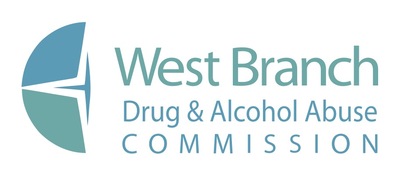What is prescription drug abuse?
Taking prescription drugs not prescribed for you by a doctor or in a way that hasn’t been recommended by a doctor, can be more dangerous than you think. In fact, it can be fatal.
Prescription drugs are the third most commonly abused category of drugs, behind alcohol and marijuana and ahead of cocaine, heroin, and methamphetamine. Some prescription drugs can become addictive, especially when used in a manner inconsistent with their labeling by someone other than the patient for whom they were prescribed, or when taken in a manner or dosage other than prescribed. Overall, an estimated 48 million people have abused prescription drugs, representing nearly 20% of the U.S. population.
People of all ages abuse prescription drugs for a number of reasons, including:
- To feel good or get high
- To relax or relieve tension (painkillers and tranquilizers)
- To reduce appetite (stimulants)
- To experiment
- To be accepted by peers (peer pressure) or to be social
- To be safe — it’s a false belief that prescription drugs are safer than street drugs
- To be legal — it’s a mistaken thought that taking prescription drugs without a prescription is legal
- To feed an addiction
The Prescription Drug Medications that are Most Commonly Abused include:
- Pain relievers
- Tranquilizers and Sedatives
- Stimulants
What Are Prescription Pain Relievers?
- Prescription pain relievers include the opioid class of drugs, such as hydrocodone (i.e., Vicodin), oxycodone (i.e., OxyContin), morphine, fentanyl and codeine. Opioids work by mimicking the body’s natural pain-relieving chemicals, attaching to receptors in the brain to block the perception of pain. Opioids can produce drowsiness, nausea, constipation, and slow breathing. Opioids also can induce euphoria by affecting the brain regions that mediate what we perceive as pleasure.
Dangers when abused:
- Highly addictive
- Can slow one’s breathing to dangerous levels, including accidental overdose
- Particularly dangerous when used in combination with alcohol
What Are Tranquilizers and Sedatives?
- Tranquilizers and sedatives are central nervous system depressants, such as Xanax, Valium, and Librium, which are often prescribed to treat anxiety, panic attacks and sleep disorders. Central nervous system depressants, known as barbiturates and benzodiazepines, slow normal brain function to produce a drowsy or calming effect.
Dangers when abused:
- Can slow breathing and heartbeat, especially if combined with other prescriptions, alcohol, or over-the-counter (OTC) cold and allergy medications
- Can lead to withdrawal and seizures when discontinued after prolonged use
What Are Stimulants?
Stimulants such as Ritalin, Adderall and Dexedrine increase alertness, attention and energy and are often prescribed for health conditions such as attention-deficit/hyperactivity disorder, narcolepsy and depression. Stimulants enhance the effects of norepinephrine and dopamine in the brain, increase blood pressure and heart rate, constrict blood vessels, and open up the pathways of the respiratory system. They can also produce a sense of euphoria.
Dangers when abused:
- Addictive
- Can create extremely high body temperature
- Can cause seizures/irregular heartbeat
Recognizing prescription drug abuse, symptoms include:
- Stealing, forging or selling prescriptions
- Taking higher doses than prescribed
- Excessive mood swings
- Increase or decrease in sleep
- Poor decision-making
- Appearing to be high, unusually energetic or revved up, or sedated
- Continually “losing” prescriptions, so more prescriptions must be written
- Seeking prescriptions from more than one doctor
Mixing alcohol and prescription drugs
- Mixing alcohol with certain medications can cause nausea and vomiting, headaches, drowsiness, fainting or loss of coordination. It can also put you at risk for internal bleeding, heart problems, and difficulties in breathing. In addition to these dangers, alcohol can make a medication less effective or even useless, or it may make the medication harmful or toxic to your body.
- Certain medicines contain up to 10% alcohol. Cough syrup and laxatives may have some of the highest alcohol concentrations.
- Older people are at particularly high risk for harmful alcohol – medication interactions. Aging slows the body’s ability to break down alcohol, so alcohol remains in a person’s system longer. Older people also are more likely to take a medication with alcohol, in fact, they often need to take more than one of these medications.
* Source: Reprinted with permission from the National Council on Alcoholism and Drug Dependence, Inc. (NCADD) www.ncadd.org
A Prescription Drug/Over the Counter Guide is available under our Resource Tab/ Guides and Brochures.
Do you have expired or unused, prescribed and over-the-counter medications? Community members can utilize local drop boxes to ensure that medications will not end up in the wrong hands but rather properly disposed of. Learn more under our Resource Tab/Medication Drop Box.
You are not alone. If you or a loved one is struggling with addiction please call our office for help. The Commission staff will assist you in navigating the beginning steps in your path to recovery.
